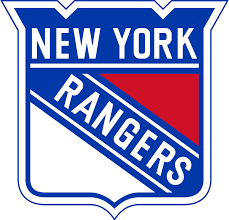The Vegas Golden Knights gave up two goals in the first period, then scored five unanswered goals over the remaining 40 minutes to complete a, 5-2, comeback victory on the road at Xcel Energy Center in Game 3 of their 2021 First Round series with the Minnesota Wild on Thursday.
Marc-Andre Fleury (2-1, 1.32 goals against average, .951 save percentage in three games played) made 14 saves on 16 shots faced in the win for Vegas.
Minnesota netminder, Cam Talbot (1-2, 2.32 goals-against average, .936 save percentage in three games played), turned aside 35 out of 39 shots against in the loss.
The Golden Knights were once again without Max Pacioretty as they took a 2-1 series lead in their first road game of the 2021 postseason as Fleury posted his 12th consecutive win with two or fewer goals allowed in the playoffs en route to his 83rd career Stanley Cup Playoff win on Thursday.
Kirill Kaprizov fed Ryan Hartman (1) for a one-timed redirection in the slot to give the Wild a, 1-0, lead at 2:16 of the first period.
Karpizov (1) and Jonas Brodin (2) had the assists on Hartman’s goal as Minnesota got off to a quick start.
Less than a minute later, however, Wild defender, Matt Dumba, was sent to the penalty box for holding, presenting the game’s first power play to Vegas at 2:43 of the first period.
The Golden Knights couldn’t get anything going on the ensuing skater advantage, however.
Almost midway into the opening frame, Joel Eriksson Ek (2) made it a, 2-0, game for Minnesota as Marcus Foligno (2) and Dumba (1) picked up the assists on Eriksson Ek’s goal at 8:30 of the first period.
Less than a minute later, Jonathan Marchessault interfered with Kevin Fiala and handed the Wild their first power play of the night at 9:14, but Minnesota couldn’t capitalize on the 5-on-4 advantage.
Moments later, Hartman slashed Golden Knights defender, Shea Theodore, and cut a rut to the sin bin at 13:31, but Vegas was unsuccessful on the power play.
Heading into the first intermission, the Wild led, 2-0, on the scoreboard and, 7-4, in shots on goal.
Minnesota also held the advantage in blocked shots (6-5), takeaways (3-2) and hits (13-12), while both teams had two giveaways each and were, 50-50, in faceoff win percentage after 20 minutes of action.
Vegas was 0/2 on the power play while the Wild were 0/1 on the skater advantage entering the middle frame.
Mark Stone (1) caught a pass in the slot from Chandler Stephenson and released a shot in catch-and-release fashion as the Golden Knights cut Minnesota’s lead in half, 2-1, at 8:39 of the second period.
Stephenson (2) and Brayden McNabb (1) notched the assists on Stone’s goal.
About half a minute later, Ian Cole tripped McNabb and presented Vegas with another power play that ultimately went by the wayside for the Golden Knights at 9:09.
Nick Holden sent an intentional shot wide of the net as the puck caromed off the endboards to Patrick Brown in the slot whereby Brown (1) hacked away until he sent the rubber biscuit floating behind Talbot to tie the game, 2-2, at 15:19 of the middle period.
Holden (1) and William Carrier (1) tallied the assists on Brown’s goal.
About two minutes later, Vegas took the lead for the first time of the night and never looked back as Reilly Smith (1) got a deflection, then his own rebound to make it, 3-2, Golden Knights at 17:33.
Holden (2) and William Karlsson (2) had the primary and secondary assists, respectively.
Karpizov then finished the second period with a tripping infraction as Alex Tuch went for a fall at 19:49. Vegas’ ensuing power play would spillover into the final frame.
After 40 minutes, however, the Golden Knights led, 3-2, on the scoreboard and, 26-12, in shots on goal, including an astounding, 22-5, advantage in the second period alone.
Minnesota still dominated in blocked shots (15-12), takeaways (8-4), hits (23-20) and faceoff win% (53-48) despite the Vegas onslaught.
Both teams had three giveaways each, while the Golden Knights were 0/4 and the Wild were 0/1 on the power play heading into the final frame.
After the Wild successfully killed off Kaprizov’s minor, they got a chance on the power play when Tuch interfered with Cole at 2:42 of the third period.
Minnesota, however, couldn’t get anything going as the Golden Knights continued to dominate the game flow.
Vegas couldn’t convert on a power play at 11:18 of the third period when the Wild were handed a bench minor for too many skaters on the ice, but it was of no matter to the Golden Knights as they simply scored later in the period.
First, when Karlsson (1) sent a wrist shot under the bar on the short side with assists from Smith (2) and Fleury (1) at 17:36 and again when Stone (2) pocketed his second goal of the game on an unassisted effort into the empty net at 19:01 of the third period.
The pair of goals had made it, 5-2– giving Vegas five unanswered goals as the final horn sounded and the Golden Knights had won, securing a 2-1 series lead heading into Game 4 on Saturday in Minnesota.
The Wild wrapped up Thursday night’s loss leading in hits (31-29), while the Golden Knights dominated in shots on goal, 40-16, including a, 14-4, advantage in the third period alone.
Vegas also held the lead in blocked shots (20-18) and faceoff win% (53-47), while both teams managed three giveaways aside in Game 3.
The Golden Knights finished 0/5 and the Wild went 0/2 on the power play on Thursday.
Game 4 is scheduled for Saturday night at 8 p.m. ET from Xcel Energy Center in St. Paul, Minnesota. Viewers in the United States can watch on NBC, while those in Canada can choose from SN360 or TVAS2.











You must be logged in to post a comment.